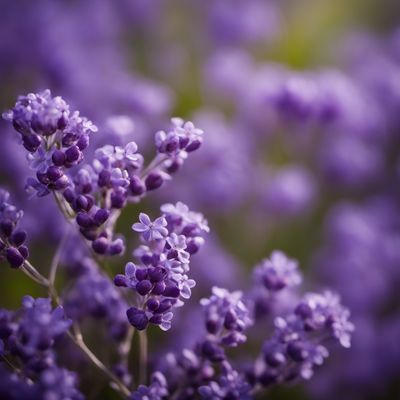
Ingredient
Rock samphires
"The Coastal Delicacy: Exploring the Unique Flavors of Rock Samphires"
Rock samphires are small, succulent plants that grow along rocky coastlines and cliffs. They have vibrant green stems and leaves, resembling miniature asparagus. The taste of rock samphires is briny and slightly salty, with a hint of citrus and a crisp texture. When cooked, they become tender and develop a delicate, umami flavor. Their appearance and taste make them a unique addition to both savory and seafood dishes.
Origins and history
Rock samphires have a rich history and have been used in culinary traditions for centuries. They are native to coastal regions of Europe, particularly the Mediterranean and Atlantic coastlines. In ancient times, they were highly valued for their medicinal properties and were even considered a remedy for scurvy due to their high vitamin C content. Rock samphires were also used as a flavoring agent in traditional liqueurs and pickles.
Nutritional information
Rock samphires are low in calories and rich in essential nutrients. They are a good source of vitamin C, vitamin A, iron, and dietary fiber.
Allergens
There are no known allergens associated with rock samphires.
How to select
When selecting rock samphires, look for vibrant green stems and leaves that are firm and crisp. Avoid any signs of wilting or discoloration. Fresh rock samphires should have a pleasant, oceanic aroma.
Storage recommendations
To maintain the freshness of rock samphires, store them in a perforated plastic bag in the refrigerator. They can stay fresh for up to a week. Alternatively, you can place the stems in a glass of water, similar to fresh herbs, to prolong their shelf life.
How to produce
Rock samphires can be grown in coastal areas with well-drained soil and plenty of sunlight. They are hardy plants that can tolerate salty conditions. Seeds or young plants can be obtained from nurseries specializing in coastal plants.
Preparation tips
Before using rock samphires, rinse them thoroughly to remove any sand or debris. The tender stems and leaves can be used raw in salads or as a garnish. They can also be blanched, sautéed, or steamed to enhance their flavor and texture. Rock samphires pair well with seafood, roasted meats, and citrus-based dressings.
Substitutions
If rock samphires are not available, you can substitute them with asparagus spears or sea beans, although the flavor will be slightly different.
Culinary uses
Rock samphires are a versatile ingredient that can be used in various culinary applications. They are commonly used in salads, stir-fries, pasta dishes, and seafood recipes. They can also be pickled or used as a garnish for cocktails and appetizers.
Availability
Rock samphires are commonly found along coastal regions of Europe, including the Mediterranean and Atlantic coastlines. They are also cultivated in some parts of North America and Australia.
More ingredients from this category

Sea asters
The Ocean's Delight: Sea Asters

Sea lavanders
Oceanic Delights

Purslanes
The Nutrient-Packed Green

Agretti
The Verdant Delight: Exploring the Unique World of Agretti

Glassworts
Glassworts: The Salty Succulents

Winter purslanes
The Nutrient-Packed Green: Winter Purslanes

Hottentot fig
The Exotic Delight